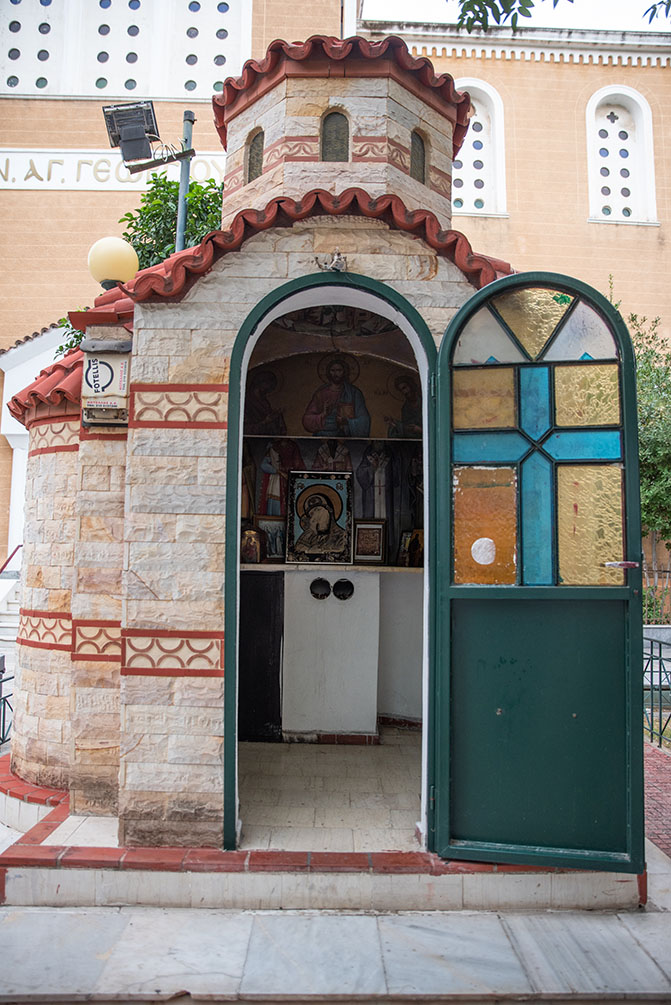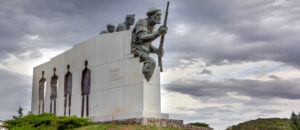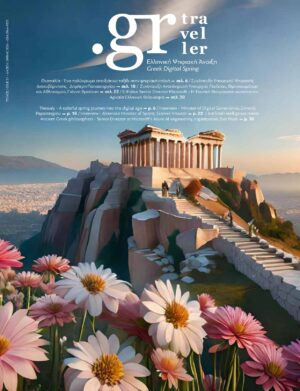Michalis Varlas, Historian: “Antiquity and new history blend with the picturesque old buildings that survive, some even with the characteristic mud brickwork of the area.”
Leaving the Metro, at Metaxourgeio Station, we leave the Fallen Airmen Monument on our right to find ourselves at the historic Metaxourgeio Square which was “mutilated” to widen Achilleos Avenue leading to the exit to Corinth. In the centre is a fountain, the work of an unknown artist, erected in the square in 1925 after spending the night in the Auction Square since 1853. Even in 1925 water was a scarce commodity for the city.

I am heading towards the Platonos Academy in the company of Emmanuel Roidis, who is noto in the distant Olympic year 1896 is the first to write about the degraded area in his witty “Complaint of the Grave Digger”.
I follow the street of Virginia Benaki, mother of Penelope Delta, I walk beyond the city limits of 1900, in a landscape very different from the one crossed by Roydis, “Where there is no power to dull the vision, but neither is there power to weary it”.
The straight road leads to the square of Agios Georgios, which hardly betrays its past, except for the small temple with the tomb of the first owner of the area after the Palingenesis, the ruler of Fanari, Georgios Karatzas. His family donated a large area of land to the municipality to create a cemetery for the city’s poor, which operated between two health crises, the plague of 1853 and the Spanish flu, the “grandmother” of our own covid, in 1918.

Around here, one will no longer find the wine shops of 1896 with the successful names “Anapasis” and “Mataiotis”, but neither will one find the legendary convenience store of the 20th century.th Century ‘The Neighbourhood Girl’, both revealing the successive identities of the area.
Today in the place of the old cemetery one can find schools, the traces of the ancient road discovered after 1930, and the old municipal dispensary, characteristic for the use of German building materials and designs that came as war reparations of the First World War.

I follow the direction that the ancient road shows us either from Monastiriou Street or from Timaiou Street. The antiquity and the new history blend with the picturesque old buildings that are still preserved, some even with the characteristic brickwork from the mud of the area.
For a century or so, the area was nothing more than a large orchard of citrus trees, pomegranates and vegetable gardens and a multitude of internal migrants working the land. The patron saint of the perivolarians, Saint Tryphon, gave the name of the neighbourhood, with the corruption “Astrifos”, since the pre-revolutionary years. Behind the temple lies the park, an oasis at a stone’s throw from the noisy centre of the big city.
The existence of the park is due to the search for Plato’s Academy by Panagiotis Aristofronas, an Egyptian from Asia Minor, husband of Ioanna Kazoulis, owner of the homonymous villa at the entrance of Kifissia. Aristophron succeeded in placing the excavations in the area under the auspices of the Academy of Athens and banning many activities in the supposed archaeological sites.

The results of the excavations can be seen in the separate sections of the park mixed with beautiful walks, a playground, people enjoying their leisure time and opportunities for quality food entertainment and fun in the shops that look out over “the ancients” and take their names from Plato and the State.


After a break, a walk up the hill of Hippio Kolonou reveals to me the view that the Athenians enjoyed when they celebrated Koulouma on the hill and in the fields of Kolonou, which for decades has been crossed by Lenormann Street. It is hard to understand that the road is dedicated to the philhellene archaeologist Charles Lenorman who died in Athens in 1859 and his heart rests in the sculpted hydria at the top of the hill next to the tombstone of the scholar of Greek mythology
Karl
Otfried
M
ü
ller
.
On this hill, Sophocles, who is said to have been born in Colonus, brings Oedipus to close the Theban cycle of dramatic poetry in Attica.

The aristocratic quarter of the ancients was occupied in later years by internal migrants who usually arrived from the now inactive Peloponnese Railway Station. Built in 1884, it is a typical example of the architecture of European stations. Today it is abandoned but the metal structures on the roofs, the magnificent lanterns from the ones used on the locomotives and the characteristic clock that signifies the end of the journey are well preserved.

After a few minutes’ walk we reach the station where we started and the city limits during the Balkan wars.
You too can discover this historic route by following the link below:
https://goo.gl/maps/CMDn1DRCU3gJGBrD6
Photos: Christos Larissaios














